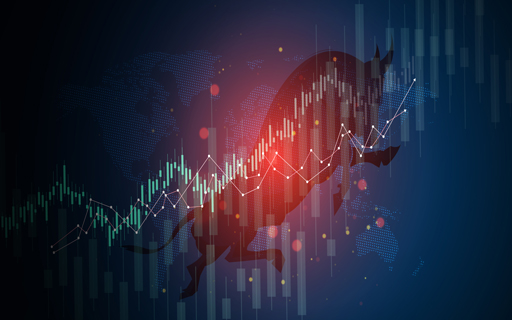India's Third Giant Leap
This Could be One of the Biggest Opportunities for Investors
- Home
- Stock Quote
- S&P BSE SENSEX
S&P BSE SENSEX Index (BSNX)
Here is the latest update and chart of S&P BSE SENSEX Index. To know more about the how the various stocks in the S&P BSE SENSEX are performing, please visit the list of Sensex 30 companies.
| Live BSE Quotes | Nov 25, 2024 11:59:00 AM | ||
|---|---|---|---|
| Value80,247.46 | % Change 1.43 | 52-Week High 85,978.25 | 52-Week Low 65,664.85 |
| Change | |||||
|---|---|---|---|---|---|
| 1 Day 1.43% | 1 Month 1.06% | 3 Months -1.78% | 1 Year 21.27% | 5 Years (CAGR)* 14.44% | 10 Years (CAGR)* 10.97% |
* Compound Annual Growth Rate
- Charts
-

S&P BSE SENSEX 
PERIOD - Advanced Charts new
- Charts by TradingView
FAQs on S&P BSE SENSEX
What is Sensex?
Still confused about what the Sensex is and what is its methodology? Your search ends here.
While scrolling through the news or talking with friends who regularly invest in the stock market, we often come across the term Sensex. Whenever the market has crashed, or has rose substantially, you'll see headlines such as Sensex Zooms xx points, or Sensex crashed xx%.
Well, the Sensex is an acronym which stands for Stock Exchange Sensitivity Index.
The Sensex comprises 30 companies listed on the Bombay Stock Exchange (BSE) so it's often referred to as BSE Sensex or S&P BSE Sensex. These 30 constituents of Sensex are the largest corporations. This list of 30 stocks is subject to revision by the BSE over time.
Market analysts and investors use Sensex to know about overall growth, sector-specific growth, or other research.
Every investor should understand the fundamentals of Sensex because it is a key indicator of economic behavior.
How To Invest In Sensex?
A guide on how one can invest in the sensitive index of the nation.
The Sensex consists of the top 30 companies in India that are listed on the Bombay Stock Exchange (BSE), and by purchasing the Sensex, you become a part-owner of these large corporations.
You can invest in Sensex in two ways.
You can begin investing directly in the Sensex companies with the corresponding weightage in the index. This implies you can directly purchase stocks in the amount equal to the stock's weightage.
Another way to invest in the Sensex is through index funds. These funds replicate the index, meaning they have a portfolio that is identical to the index. As a result, a Sensex index fund will hold the same 30 stocks as the index. This option is the preferred one.
An index fund has advantages, like low expense ratio, no bias investing, and passively managed funds.
How to calculate Sensex?
To calculate market indices has always been an enigma for investors. Read to know the math behind this pulse of the domestic stock market of India.
The free float market capitalization method is used to calculate the BSE Sensex value. The following are the key steps in its calculation.
First of all, the selection of the top 30 companies is to be done.
For the calculation, one needs to find free-float market capitalization.
The market capitalization is calculated as,
The free float factor is the percentage representing total shares issued by a company that is readily available to trade for the common public.
This factor excludes shares issued to promoters, the government, and others that are not available for public trading on the market.
And using the above two factors free float market capitalization is determined.
After that, the value of Sensex is to be calculated.
Base market capitalization
The base period (year) used here is 1978-79 and the base value is 100 index points
This is how the sensitive index of India is calculated.
How many companies are under Sensex?
Take a look at which 30 bigshots constitute the Sensex.
The BSE Sensex is a free-float market-weighted stock market index constituting 30 large and most actively traded corporations of India.
These companies represent a different industrial sector of the Indian economy.
The Bombay Stock Exchange (BSE) can change the list of these companies from time to time.
Check out the list of BSE Sensex 30 companies.
To know more about how the BSE Sensex is performing, please see the BSE Sensex Live Chart.
And since large-caps interest you, here's our guide to buying bluechip stocks.
What is price of Sensex live today?
The last traded price for BSE Sensex was up 1.4% to 80,247.5.
Check out the top gainers from the BSE Sensex.
And to know more about the Index, please visit the BSE-30 Live Chart.
Today's Market
![Sensex Today Zooms Over 1,200 Points | Nifty Above 24,300 | Adani Ports Climbs 4%]() Sensex Today Zooms Over 1,200 Points | Nifty Above 24,300 | Adani Ports Climbs 4%(10:30 am)
Sensex Today Zooms Over 1,200 Points | Nifty Above 24,300 | Adani Ports Climbs 4%(10:30 am)
Asian stocks experienced a notable rally alongside US equity futures on Monday, marking a positive turn for the markets. The dollar retreated against other currencies as bond yields declined.


